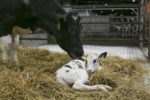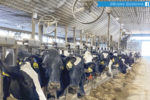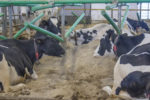Fresh Cows
The transition period can be stressful and is generally accompanied by an increased demand for trace minerals for fetal growth, colostrum/milk production and to support a challenged immune system.
Read More
New strategies to prevent milk fever
Feeding dairy cows zeolite A prepartum has been explored as a feeding strategy to reduce hypocalcemia and prevent clinical milk fever.
Read More
Modulation of transition cow inflammation: Before or after calving?
Proactive and applicable strategies to modulate inflammation can help dairy producers improve cow health and performance while management is adjusted.
Read More
Best practices for transition cow success
Feedbunk management, stocking density, pen moves and lockup times all influence transition cow success.
Read More
How heat stress impacts dairy cow uterine health in the Southeast
Heat stress reduces milk yield and compromises fertility in the dairy cow. This problem is observed across the U.S. and is compounded in the Southern and Southeastern states where summer temperatures are excessive.
Read More
The importance of bovine obstetric training – Part 2
Provide support in the calving pen and maternity area by defining expected communication, newborn calf care and recordkeeping.
Read More
The importance of bovine obstetric training – Part 1
Provide support in the calving pen and maternity area by identifying stages of labor, timing intervention, and calving hygiene, along with assessing presentation, position and posture.
Read More
Don’t get lost in a forest when choosing fresh cow interventions
Five outcomes necessary to prepare every cow for a successful 305-day lactation.
Read More
Lasting through lactations: Longevity in dairy cows
Several factors contribute to longevity in dairy cows, such as cow comfort, health, management practices and genetics.
Read More





